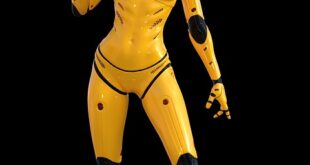The Rise of Robot Revolution: Automation Takes Over
Introduction
Automation is spreading like a wildfire and has driven our industrial environment in an influx direction. Robots are the face of modernization, efficiency, and optimization today, and technology is bringing together intricate services to offer quicker, more reliable output processes. According to McKinsey & Company, automation technology revenue will double to more than $250 billion in five years. It is becoming apparent that robots are creating, changing, and advancing jobs in unprecedented ways.
Robotic Takeover: Automating Human Jobs
Automation utilization in industries is redefining the conventional contours of work, to the point where work, as we know it, may undergo fundamental changes. Software bots that perform a range of tasks without intervention, including decision making, self-improvement, and analysis beyond human expertise, make work-driven innovation powered by Big Data, Augmented Reality, data sorcery and mechanized infrastructure that is robust, effective, and evolving.
Mechanized Fabrication:
Robots do not need leisure time, vacation days, or paychecks. So while you may find it a fantastic advantage, bills become substantially less fluctuant year-round. Robotic manufacturing businesses use can liberate employers from the human factor, making output volumes, timeframes, store movement, precision, operator inputs, and wear patterns entirely predictable, minimizing scrap, deviations, operational downtimes and implementing 24-hours rendering speeds. The technology streamlines operations by pushing effectiveness forward and adopting mechanized fabrication where human flaws cannot apply.
Health Industry Renovated:
Robotic-assisted surgery systems, according to IEEE Spectrum, related to laparoscopic approaches relying on laparoscopic methods applied to replace larger incision surgeries. These modern surgical procedures hook the time-sensitive hand movement of physicians to formidable instruments acting as extended arms. In many cases, it concurrently minimizes the amount of pain killers that must be given to control trauma and sometimes cross-contamination. One significant institution practicing this kind of mechanized precision medicine is California’s Cedar-Sinai Hospital in Los Angeles.
Conclusions
The growth of hardware and software knowledge is rapidly giving rise to new fields and applications, but it’s the combo of old tech, biomechanics, and the organic capacity of manufacturers and technicians that all blend in technology-individualized innovation ecosystems now. Robots can do things that people can do, leading to a future where workers and machines collaborate instead of providing easy victories in disputes that will reverse them. Dark scenarios, conspiracy theories have emerged through dreadful images circulating about the coming years portraying a horrid world where humans become subordinate to robots. When humans operate “with” robots, not “for” robots, the potential exists to capitalize on impressive opportunities achievable with automation technology.
 Mind Uncharted Explore. Discover. Learn.
Mind Uncharted Explore. Discover. Learn.



